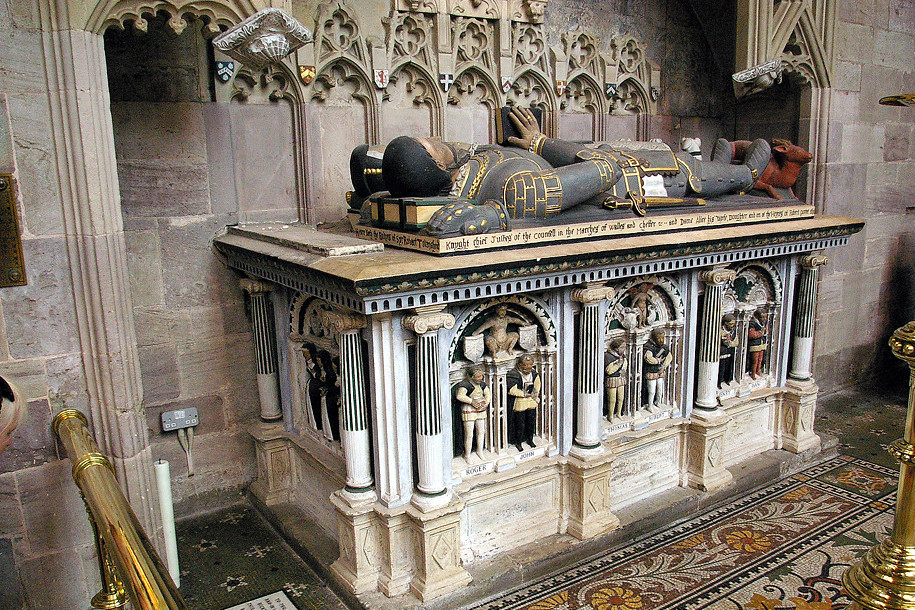
The substantial tomb chest, with painted effigies of Sir Robert Townshend and his wife, and figures of their twelve children around the sides, is set within an arched recess on the north side of the chancel, close to the altar. Townshend, who died in 1556, was the second son of a significant Norfolk gentry family. He made a career as a lawyer, became Chief Justice and member of the Council of the Marches. He lived in Ludlow in a house on the site of the Augustinian priory where the Smithfield car park now is. He was knighted in 1545.
The inscription panel behind the tomb, cutting into older tracery, bears the date 1581; it seems likely that the tomb in its present state dates from that time, and was erected by his children, after the death of their mother in the 1570s.
The tomb chest is of limestone, and clearly designed for two effigies. The effigy of Townshend shows him in armour rather than lawyer's robes. The effigy of Lady Townshend is slightly shorter than that of her husband. The figures of their twelve children, six sons in pairs on the front, six daughters in two groups of three at each end, all named, are set within a classical framework of round-headed arched divided by fluted Ionic columns. The curious mixture of classical features includes mythical creatures set below the arch heads.
The tomb has been much repaired and repainted. Thomas Dineley, secretary to the President of the Council in the later 17th century, commented: ‘this monument has been so much abused by the army in the time of the late wars that I can give but an improper account of it’, but he was able to record the heraldry, noting that it provided evidence for the marriages of at least three of the sons and five of the daughters.
The recess in which the tomb stands was originally the setting for the pre-Reformation Easter Sepulchre, the site where the Communion bread, and sometimes an image of the dead Christ, was placed during Easter Week, a sacred location which became popular for personal tombs in the later middle ages. The choice of the site for the Townshend tomb may reflect loyalty to the old religion; members of the family remained catholic in the 17th century.
The decorative arch around the recess has hanging corbels, the eastern one carved with a pomegranate, emblem of Katharine of Aragon, suggesting the arch was part of a refurbishment of the church in the early 16th century, when Katharine, as the wife of Prince Arthur, was living in Ludlow. Alternatively the corbels maybe a later addition as it is possible the original arches were cut back to accommodate the tomb or at another time.